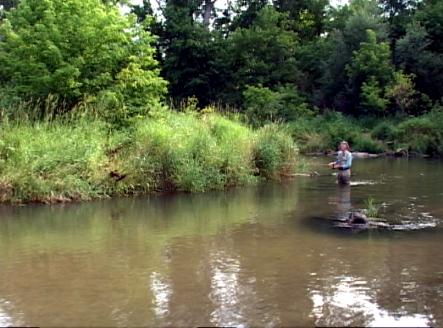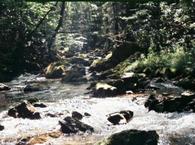
The Whitewater River in Minnesota is a tributary of the Upper Mississippi River and consists of three main branches that flow thru the rich prairie area of Minnesota. The branches are named the North, Middle and South Branches and they flow together near the town of Elba. Combined they offer about 50 miles of great trout fishing because they are limestone, spring fed, and as such they have a high pH. However, to my surprise there is no whitewater on the Whitewater River, but rather gentle flows of water on all the branches.
The springs on Whitewater River offer advantages such as making the water clear and cold for most of the year, great for summer and also unlike most northern streams, they are excellent fishing thru the entire winter. The excellent hatches of midges produce great opportunities to fish on sunny days even though the temperature is near zero.
The waters, for the most part, consist of gravel runs and riffles along the banks that are populated with cottonwoods and aspens. There are plenty of opportunities to catch big browns lurking in the undercut banks or in some of the longer pools in all three branches. But some of the more complicated runs of the South Branch draw more anglers.
Whitewater State Park has 3.3 miles of catch and release trout fishing on the upper reaches Whitewater River. Also, Trout Run and Beaver Creek are tributaries of the Whitewater and they offer good trout fishing as well.
Fly Fishing the Whitewater River:
You need to consider the three branches of the Whitewater differently as the fishing techniques for fly fishing the Whitewater River vary greatly between the North, Middle South and Main sections of the river. The headwaters of the Middle Branch contain brook trout but few if any rainbow trout. On the other hand, rainbow trout can be found in all ht other sections of the Whitewater River. The brook trout will more often succumb to dry flies while the rainbows and browns will show more interest to the nymphs.
In the larger pools, a nymph fished slowly with a strike indicator will be the most effective technique. Adjust the depth of the fly as required. This is very effective in the winter since the springs do not freeze over and there can be some significant midge hatches.
For flies, we prefer the Perfect Fly series of flies. Some patterns that we recommend are Blue Winged Olive, Blue Quill, (also known locally as the mahogany dun), midges Brown Sculpin and the Green Sandwich Hopper.
Spring:
As the water levels reside good fishing can be available starting with the opening of the general fishing season in April. Before that the catch and release portion will provide anglers with action.
Summer:
Due to the numerous springs, the summer season will provide good fishing especially in the upper sections of the Whitewater River where the water will remain cooler. Dry flies as well as terrestrials like hoppers will work well.
Fall:
The fall season may well be the best season the fish the Whitewater River. The air is cooler and the foliage is bright. Some terrestrials will be effective early in the fall.
Winter:
Of course the catch and release portion will be a great place to fish with nymphs using strike indicators. In the afternoons on sunny days, you will find hatches in the riffles. However, be prepared for cold by using neoprene waders.
The Whitewater River is easily accessed as it flows through a large wildlife management area, the Carley State Park and the Whitewater State Park. There are public access points as well and they can be found on a map from the Minnesota Department of Natural Resources website.
Fly Fishing Eastern Freestone Streams
Three popular DVDs for Fly Fishing: Brook Trout, Rainbow Trout, and Brown Trout





